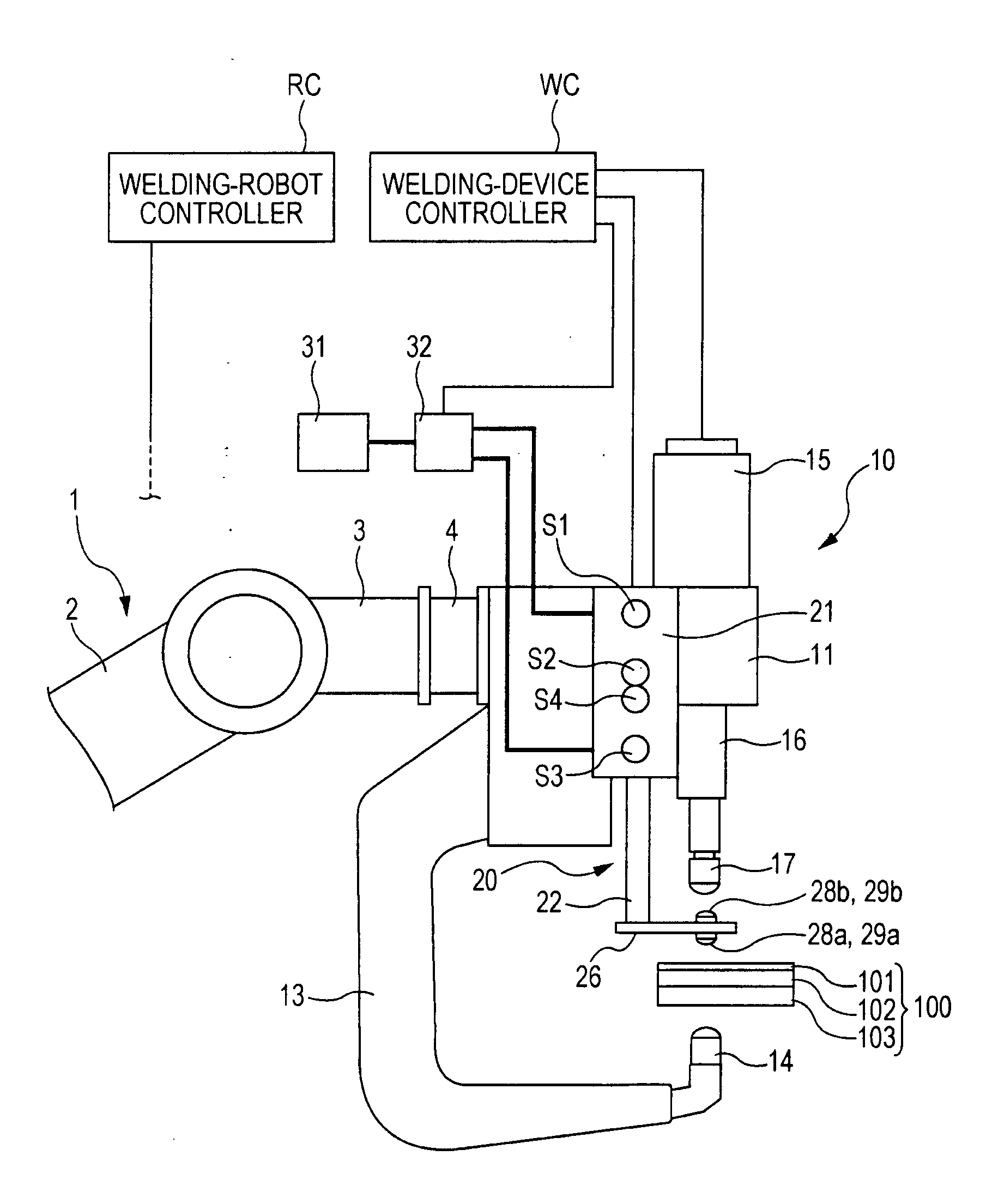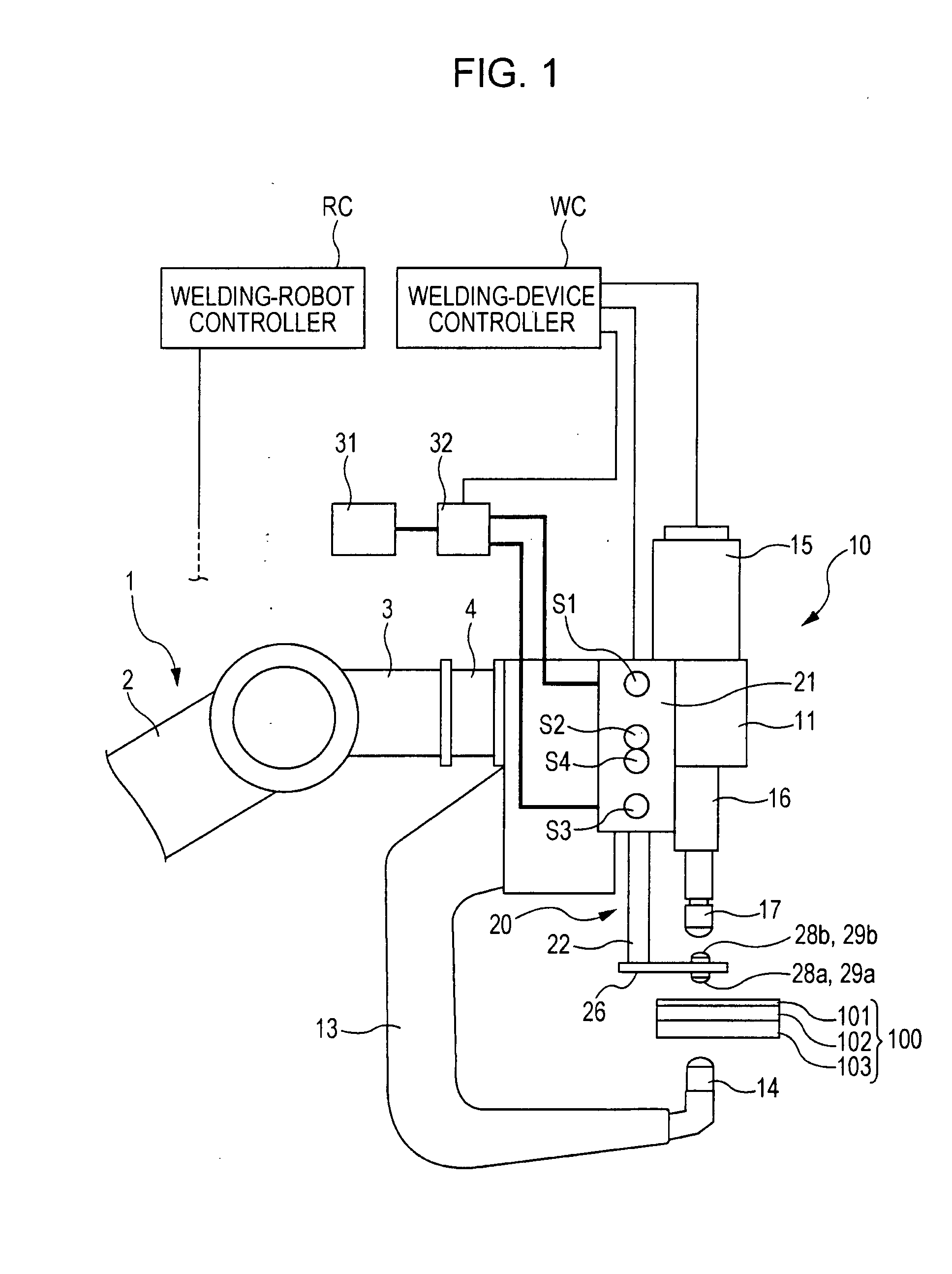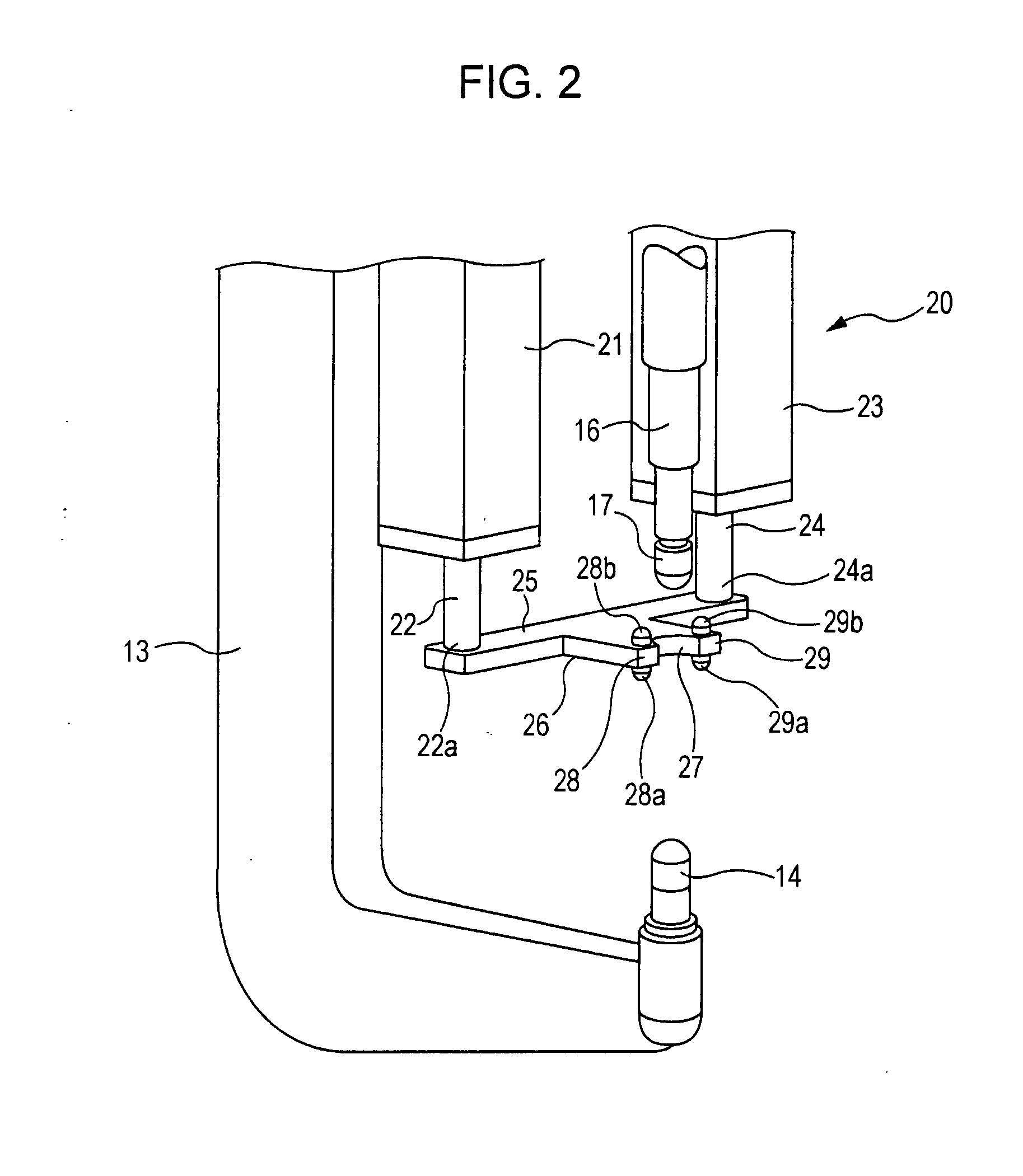Spot-welding method and spot-welding device
- Summary
- Abstract
- Description
- Claims
- Application Information
AI Technical Summary
Benefits of technology
Problems solved by technology
Method used
Image
Examples
first embodiment
[0070]A first embodiment of the present invention will be described below with reference to FIGS. 1 to 8. FIG. 1 illustrates the configuration of a spot-welding device. FIG. 2 illustrates a relevant part of the spot-welding device.
[0071]In FIG. 1, reference numeral 1 denotes a welding robot, reference numeral 10 denotes a spot-welding device supported by the welding robot 1, and reference numeral 100 denotes a workpiece to be welded.
[0072]Before describing the welding robot 1 and the spot-welding device 10, the workpiece 100 will be described first. The workpiece 100 has a three-stacked-plate structure formed by stacking a thin plate over one of two stacked thick plates. For example, in the following order from the top, the three-stacked-plate structure includes a thin plate 101 having low rigidity, and a first thick plate 102 and a second thick plate 103 that are thicker and more rigid than the thin plate 101.
[0073]The welding robot 1 is, for example, an articulated robot and has a...
second embodiment
[0117]A second embodiment of the present invention will be described below with reference to FIGS. 9 to 11. FIG. 9 illustrates the configuration of a spot-welding device, FIG. 10 illustrates a relevant part of the spot-welding device, and FIG. 11 is an operation diagram thereof. Components in FIGS. 9 to 11 that correspond to those in FIGS. 1 and 2 are given the same reference numerals, and detailed descriptions thereof will be omitted.
[0118]In a spot-welding device 40 according to this embodiment, the control-pressure applying unit 20 in the first embodiment is replaced by control-pressure applying unit 41 supported by the rod 16.
[0119]As shown in FIGS. 9 and 10, the rod 16 of the spot-welding device 40 has a columnar shape and includes a base end 16A protruding downward from the base 11 and having a relatively large diameter, a columnar shaft 16C having a smaller diameter than the base end 16A and extending continuously from and coaxially with the base end 16A via a step 16B, and a...
third embodiment
[0126]A third embodiment of the present invention will be described below with reference to FIGS. 12 to 17. FIG. 12 illustrates the configuration of a spot-welding device, FIG. 13 illustrates a relevant part of the spot-welding device, and FIGS. 14A to 14H illustrate operation steps thereof. Components in FIGS. 12 to 14H that correspond to those in FIGS. 1 and 2 are given the same reference numerals, and detailed descriptions thereof will be omitted.
[0127]In FIG. 12, reference numeral 1 denotes a welding robot, reference numeral 50 denotes a spot-welding device supported by the welding robot 1, and reference numeral 110 denotes a workpiece to be spot-welded.
[0128]Before describing the welding robot 1 and the spot-welding device 50, the workpiece 110 will be described first. The workpiece 110 has a four-stacked-plate structure formed by stacking thin plates over opposite faces of two stacked thick plates. For example, the four-stacked-plate structure includes a first thick plate 102 ...
PUM
| Property | Measurement | Unit |
|---|---|---|
| Pressure | aaaaa | aaaaa |
Abstract
Description
Claims
Application Information
 Login to View More
Login to View More - R&D
- Intellectual Property
- Life Sciences
- Materials
- Tech Scout
- Unparalleled Data Quality
- Higher Quality Content
- 60% Fewer Hallucinations
Browse by: Latest US Patents, China's latest patents, Technical Efficacy Thesaurus, Application Domain, Technology Topic, Popular Technical Reports.
© 2025 PatSnap. All rights reserved.Legal|Privacy policy|Modern Slavery Act Transparency Statement|Sitemap|About US| Contact US: help@patsnap.com



